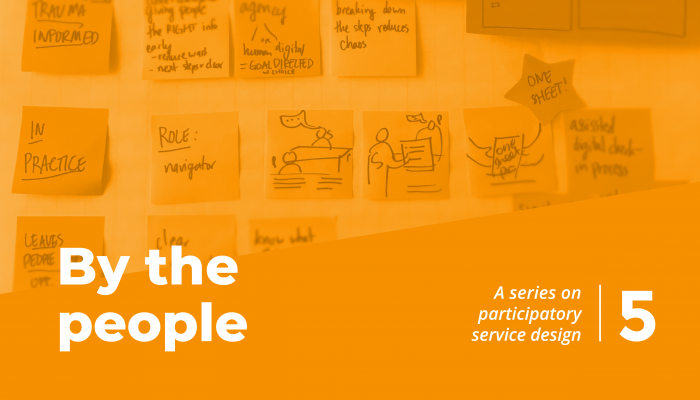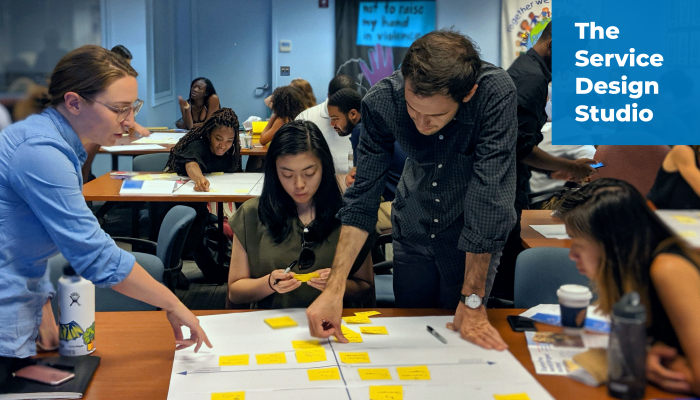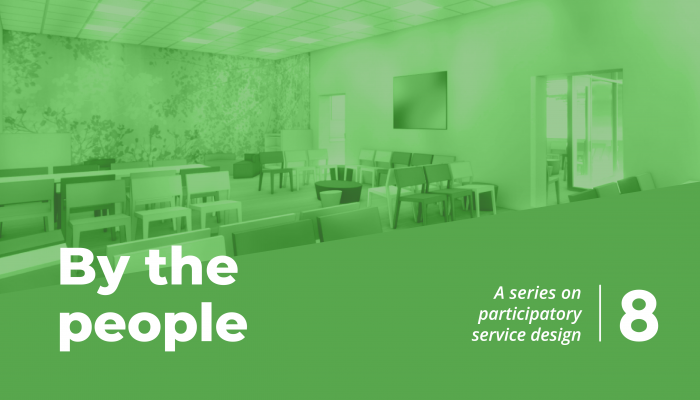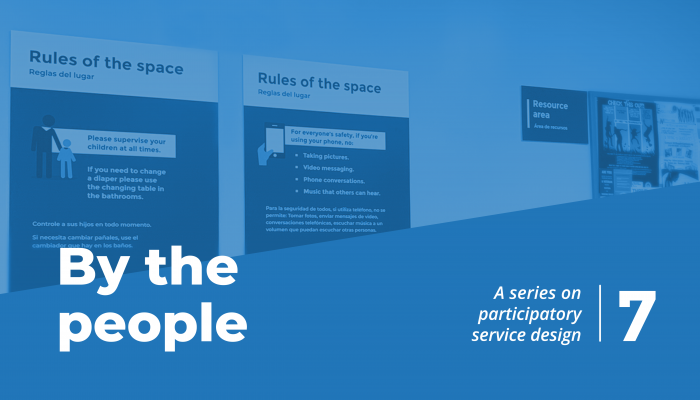This post is part of a series called By the people. It explores how the Office of Homeless Services (OHS) and the Office of Open Data & Digital Transformation (ODDT) are using participatory service design methods to improve the City’s homeless prevention, diversion, and intake services. If you’re new to the series, begin with our first post.
In our April post, we wrote about the six opportunity areas for service improvement within OHS. These areas were selected based on insights gathered during our fieldwork with OHS and provider network staff and participants.
In this post, we discuss project one, which was the future-state service experience project.
If you’ve been tracking our project progress, the work discussed in this post spans the prototyping and piloting phases in our participatory service design process.

Project overview
The first service improvement effort we tackled with OHS after the understanding and defining phases was the future-state service experience project. The overarching question guiding this project was: How might we collaborate with leadership, staff, and participants to improve each key moment in the prevention, diversion, and intake service?
To answer that question, we:
- Built an extended project team of staff from both access sites, as well as OHS unit leaders from across the service experience. It was important to us and OHS to collaborate with staff to design a future state that both made sense on the ground and aligned with broader systems change within OHS. We met on a bi-weekly basis for several months until the project was complete.
- Co-created the future-state service experience with staff across the provider network and with participants who had engaged with access sites at some point in their housing journey. In total, we facilitated co-design workshops with over 61 people.
- Worked with advisers who provided expert advice on service design and trauma-informed best practices. Dr. Meagan Corrado was our trauma-informed service delivery advisor, and the Public Policy Lab coached us on service design methods and deliverables.
Person-centered service framework
The terms person-centered and trauma-informed are used often in service design, but their meaning is vague to many. Because these terms can be difficult to define in concrete ways, we used a framework to map a future-state service experience for staff and participants—considering the constraints of the system. Then, we applied a trauma-informed lens to the framework.
Our service design framework is comprised of the following:
- People who access and deliver a service (e.g., participants, advocates, and staff across the provider networks)
- Processes are the clear steps people take to access or deliver a service
- Information that each person needs to be successful
- Channels are the avenues through which information is received and delivered (e.g., physical service environment, websites, phone, one-pagers, etc)
- Infrastructure that enables each person to be successful (e.g., enterprise technology, training, policy, etc)
The service design framework is a person-centered framework because it centers service interactions, information, touch-points, and infrastructure around the needs of the people who access and deliver the service.
We uncovered those needs through extensive fieldwork discussed in a previous post. This framework helped us make sense of the intricacies within the prevention, diversion, and intake service experience, so changes to the service system could be accounted for and implemented on the ground.
Applying a trauma-informed lens to the service design framework
Trauma-informed organizations acknowledge how people have experienced trauma, recognize how traumatic experiences inform interactions within a service system, and respond accordingly—through the design of service experiences—so people aren’t re-traumatized when engaging with a service.
For this project, we worked with OHS and a trauma-informed service delivery expert, Dr. Meagan Corrado, to ensure our future-state service experience recommendations would enable a sense of collective well-being among staff and participants. We defined collective well-being as leaving participants and staff better off after having interacted with the prevention, diversion, and intake service.
Our understanding of collective well-being is based on three pillars of delivery:
- Clear and consistent: Ensure staff and participants have the information they need to make informed decisions at each step in the process.
- Goal-directed with choice: Identify what staff and participants need and then use that information to enable personal agency.
- Safe and respectful: Foster a sense of physical and emotional safety, so staff and participants in crisis feel protected.
Then, we mapped all of our design interventions to those pillars.
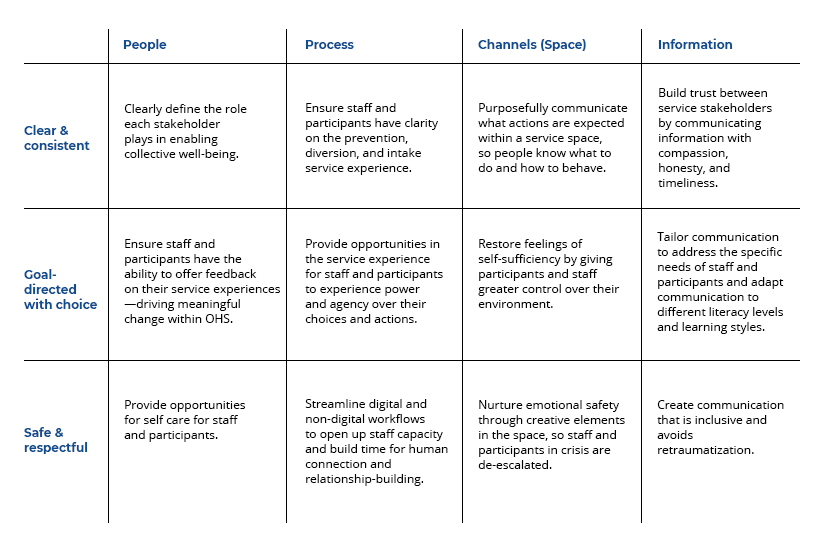 We used these goals to guide our deliverables for the future-state service experience project.
We used these goals to guide our deliverables for the future-state service experience project.
Project deliverables and next steps
The key deliverables for the future-state service experience project were:
- Trauma-informed service strategy: We created an overarching strategy that articulated what person-centered and trauma-informed service delivery could look like for the City’s prevention, diversion, and intake service, and what role each stakeholder plays in enabling that strategy. This was the foundation for the following deliverables.
- Future-state service map: We co-created a “reasonable ideal” future state service journey with staff and participants that mapped the key moments in a participant’s’ experience with the prevention, diversion, and intake service.
- Detailed scenarios: Based on the service map, we created over 15 scenarios that demonstrated what person-centered and trauma-informed service delivery look like on the ground.
- Customized trauma-informed training: We’re currently working with our trauma-informed service delivery advisor to develop customized training for and with staff that addresses de-escalation, vicarious trauma, and self-care.
At the moment, we’re finalizing the future-state service experience project work and will detail it in a final report that we’ll release this year with OHS.
+ + + + +
Our next blog post will dig deeper into how we addressed the informational components of OHS’s prevention, diversion, and intake service.
Questions or comments? Email oddt@phila.gov.

